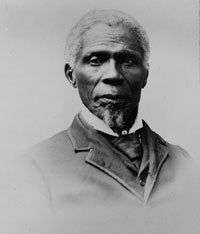Last updated: March 8, 2018
Article
Moccasin Bend: At the Crossroads of Slavery and Freedom

NPS Photo
The first enslaved people on Moccasin Bend were likely owned by the Cherokee. A number of prominent Cherokee leaders were slaveowners, and it is likely that at least a few enslaved people crossed Moccasin Bend at Brown's Ferry. In 1819, the Cherokee and the United States agreed to a treaty that ceded the land north of the Tennessee River, including Moccasin Bend. As part of this, Hamilton County was established, and white landowners began to acquire property along Moccasin Bend. A number of them were slaveholders, including James Smith, who enslaved more than a dozen people on his farm along the northern neck of Moccasin Bend between the present-day Moccasin Bend National Archeological District and Baylor School.

Ohio History Connection/Wilbur H. Siebert Collection/MSS 116 AV; Box 78, Folder 5
Not all enslaved people on Moccasin Bend in the late 1830s had freedom in their immediate future. In October 1838, just a few months before Cummings escaped, the United States government forced the Cherokee to leave east Tennessee and northwest Georgia on what became known as the Trail of Tears. A number of Cherokee slaveholders took their slaves with them to the western territories. These enslaved people were some of the last to be freed at the end of the Civil War, with emancipation not enforced in the Cherokee Nation until 1866.

Library of Congress
Today, Moccasin Bend National Archeological District is an important component of Chickamauga and Chattanooga National Military Park. Visitors from around the community, and from around the nation, can find solitude in this quiet forrested peninsula just minutes from the bustle of downtown Chattanooga. But for generations, this place sat at a crossroads of suffering and hope, and of freedom and slavery, for both the Cherokee and enslaved people who crossed this peninsula against their will.
